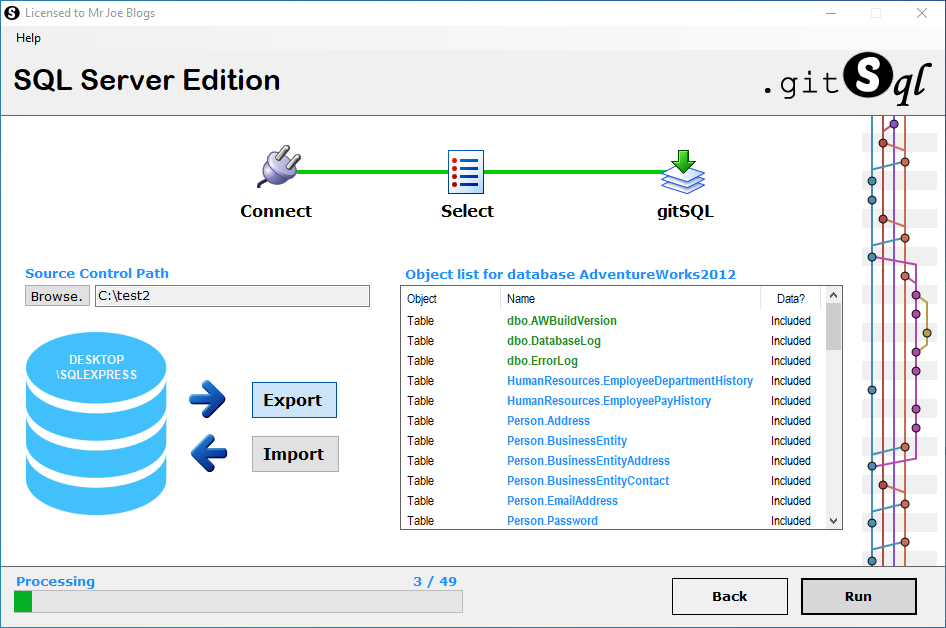Source Control for SQL
Under the Hood
What is gitSQL?
What does gitSQL do exactly?
Under the hood; gitSQL will discover database objects and export them as native database statements. The statements allow for the flat file to be saved in source control. gitSQL can rebuild a database by importing the flat files to a target database. Target databases can be local, remote/cloud, existing or new.
Does gitSQL export Data too?
Yes – it does. Data can be exported out into data files. These files can then be imported into a target database.
*free version limited to 20 tables, 10 views, 10 stored procedures and 10 functions.
SQL Server / Azure Edition
PostgreSQL Edition
MySQL Edition
1. Connect
- Enter credentials to a PostgreSQL database
- Local and Remote instances supported
2. Select
- Discover database objects
- Select All, Schema Only, Data Only options
- Import check box – for discovering database objects from source control
3. gitSQL
- Export to a Source Control Directory
- Export, creates flat file SQL statements of objects from SQL Server
- The data option creates a flat file version of the data from Tables






